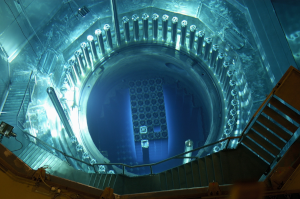Enseignement
Université Lyon 1
Université Grenoble Alpes
Data analysis
 I had the opportunity to give a lecture on Stochastic & Statistical Aspects in particle physics to the master students of the European School of Instrumentation in Particle & Astroparticle Physics (ESIPAP) for two years. The students are reminded some basics about statistics and then learn usefull tools such as profile likelihood test statistics and Monte Carlo simulations. The course content is presented in the following slides: Probability and Statistics Basic concepts - F. Ruppin.
I had the opportunity to give a lecture on Stochastic & Statistical Aspects in particle physics to the master students of the European School of Instrumentation in Particle & Astroparticle Physics (ESIPAP) for two years. The students are reminded some basics about statistics and then learn usefull tools such as profile likelihood test statistics and Monte Carlo simulations. The course content is presented in the following slides: Probability and Statistics Basic concepts - F. Ruppin.
I also taught data analysis practical sessions to fourth year students majoring in nuclear energy engineering. The students use analysis tools to fully harness the information contained within nuclear physics related data sets. They start by using the moments of standard distributions and code a Monte Carlo simulation of a full detection setup during the last session. These pratical sessions allow the students to understand the operating principle of some of the analysis softwares that they will use in the nuclear industry.
Special relativity
 I gave tutorials of special relativity to second year students at the university of Grenoble. These tutorials aim at giving the students a good understanding of the consequences of the Lorentz transformations. Half of the sessions tackle the issue of kinematics in special relativity: velocity-addition formula, space time diagrams, causality, length contraction and time dilation. The remaining sessions are dedicated to relativistic dynamics: four-momentum, Doppler effect, particle decay and Compton scattering. These tutorials give the students all the tools that they will need in the following years at the university to understand special relativity in the tensor formalism as well as general relativity.
I gave tutorials of special relativity to second year students at the university of Grenoble. These tutorials aim at giving the students a good understanding of the consequences of the Lorentz transformations. Half of the sessions tackle the issue of kinematics in special relativity: velocity-addition formula, space time diagrams, causality, length contraction and time dilation. The remaining sessions are dedicated to relativistic dynamics: four-momentum, Doppler effect, particle decay and Compton scattering. These tutorials give the students all the tools that they will need in the following years at the university to understand special relativity in the tensor formalism as well as general relativity.
Nuclear physics
 I taught practical sessions of nuclear physics to fourth year students at the university of Grenoble. Five different experiments allow the students to use typical detectors used in the nuclear industry such as Germanium junction detectors or scintillators coupled to photomultipliers. The students learn how to calibrate the relation between the energy of the incoming particles and the measured channel numbers of the multi-channel analyzer coupled to the detector. To this end they need to learn how to use typical peak search softwares and the safety precautions that are needed to use radioactive sources. They have the opportunity to apply data analysis tools and also use the knowledge that they acquired on the nuclei energy levels.
I taught practical sessions of nuclear physics to fourth year students at the university of Grenoble. Five different experiments allow the students to use typical detectors used in the nuclear industry such as Germanium junction detectors or scintillators coupled to photomultipliers. The students learn how to calibrate the relation between the energy of the incoming particles and the measured channel numbers of the multi-channel analyzer coupled to the detector. To this end they need to learn how to use typical peak search softwares and the safety precautions that are needed to use radioactive sources. They have the opportunity to apply data analysis tools and also use the knowledge that they acquired on the nuclei energy levels.
Thermodynamics
 I gave tutorials of thermodynamics to second year students at the university of Grenoble. These tutorials tackle the issue of the ideal gas law, the first and second law of thermodynamics, heat engines, and phase transitions. As the students had a major in chemistry, I emphasized the importance of the notion of free enthalpy in this discipline. The students learn the tools and concepts that they will need to understand future courses on statistical physics or energy production.
I gave tutorials of thermodynamics to second year students at the university of Grenoble. These tutorials tackle the issue of the ideal gas law, the first and second law of thermodynamics, heat engines, and phase transitions. As the students had a major in chemistry, I emphasized the importance of the notion of free enthalpy in this discipline. The students learn the tools and concepts that they will need to understand future courses on statistical physics or energy production.
